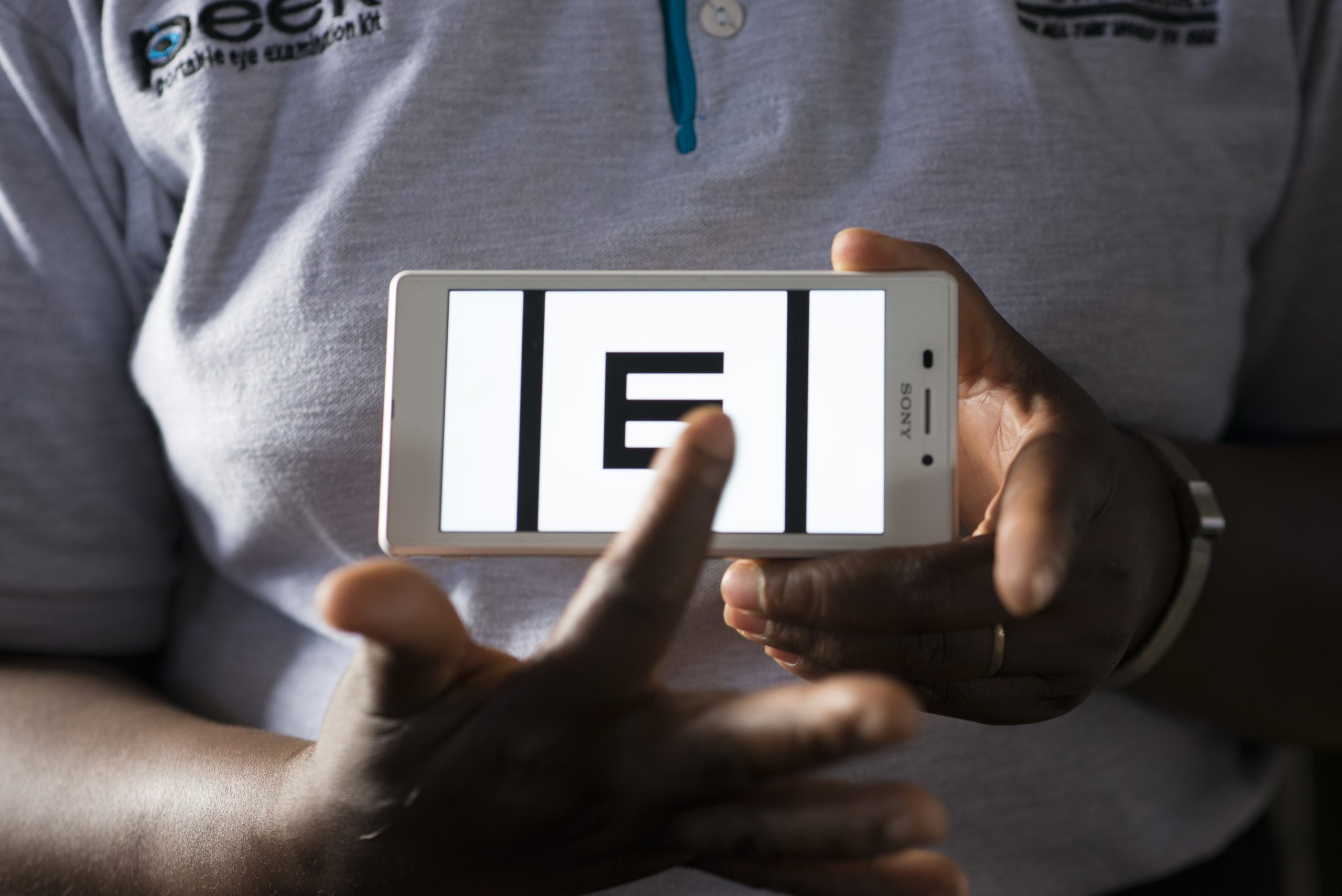The Peek visual acuity test used in RAAB7 © Rolex Joan Bardeletti
In order to achieve universal health coverage and ensure no one is left behind, different indicators need to be monitored when recording who is receiving eye health services. One of these indicators is socioeconomic position (SEP), which assesses the economic and social resources of people in a society. Lower SEP has been shown to be associated with higher prevalence of vision impairment and worse access to services, and there have been recent calls by the WHO for vision and eye health data to be disaggregated by equity dimensions.
A major source of population eye health data is from rapid surveys, and a new study from ICEH has assessed several SEP indicators for inclusion in The Rapid Assessment of Avoidable Blindness (RAAB) methodology, the most commonly conducted rapid vision survey worldwide.
Currently, age and gender are the only equity dimensions routinely recorded in RAAB, while a disability module is optional. Including a measure of SEP would be useful to monitor the eye health status of an underserved group in a population and plan services accordingly.
This study aimed to assess whether one objective, asset-based measure and three subjective measures of SEP demonstrated inequality in eye health outcomes for a population from the 2019 Gambia National Eye Health Survey, a recent comprehensive cross-sectional survey which included a RAAB.
The research looked at a subset of 4,020 adults 50 years and older from a nationally representative sample of adults 35 and above in The Gambia.
The measures that this study assessed were:
- Objective: EquityTool – a short asset ownership and household characteristics questionnaire to define relative wealth categories in a country
- Subjective questions asking people to evaluate:
- Food adequacy – whether food available to their household is adequate for their needs
- Income sufficiency – whether their household income is sufficient for their needs
- Economic ladder – to place themselves on a ‘ladder’ between the poorest and richest in their community
The study found there was no pattern of inequality in eye health outcomes across the categories of the objective asset measure and of the economic ladder question.
The food adequacy measure however showed inequality in eye health across people with different levels of food availability. Almost a quarter of participants aged 50 years and older reported less than adequate household food, and people who self-identified in this bottom group experienced worse eye health outcomes than those in the middle group.
Similarly, income sufficiency also showed a pattern, with people identifying in the bottom group for income having significantly worse indicators of sight loss.
These subjective, experience-based SEP measures may capture less obvious aspects of social status and allow research participants to be centred in the process of identifying inequality.
Therefore, food adequacy and income sufficiency may be good measures to include in future RAAB survey development, and further research pilot testing the acceptability of the questions is recommended.
The inclusion of SEP measures within data collection for eye health will help quantify inequality and help ensure that the people most in need of eye care receive it.
Publication
McCormick I, Kim MJ, Hydara A, et al Socioeconomic position and eye health outcomes: identifying inequality in rapid population-based surveys BMJ Open 2023;13:e069325. doi: 10.1136/bmjopen-2022-069325

